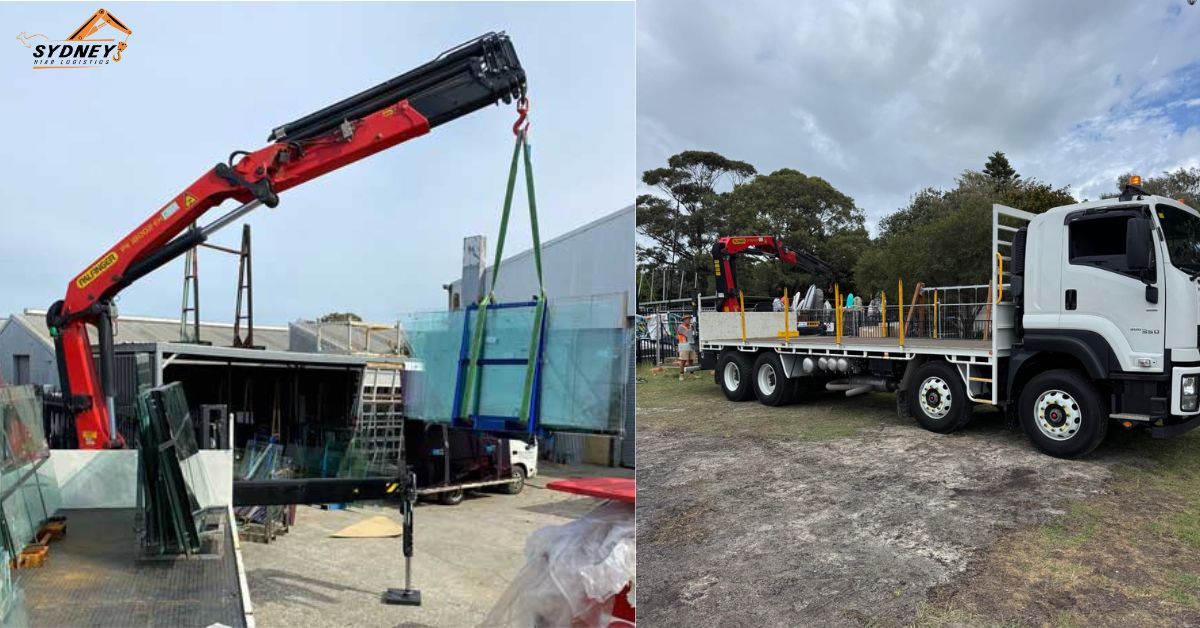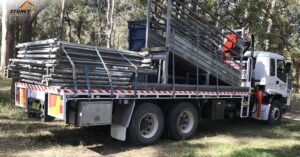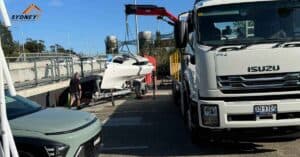When it comes to transporting heavy materials or equipment, two types of trucks that often come up in conversation are crane trucks and Hiab trucks. Though they may seem similar at first glance, there are key differences between the two, especially in terms of their functionality, construction, and how they are used in various industries. This guide aims to provide a deep dive into these two types of trucks, exploring what makes each unique, their advantages, and how they can be used effectively in different situations.
What Are Crane Trucks?
Crane trucks, also known as truck-mounted cranes, are vehicles that are equipped with a mechanical crane. These trucks are designed to lift and transport heavy loads, especially in industries like construction, logistics, and even emergency services. The crane is mounted directly onto the truck’s chassis, enabling the truck to carry out lifting tasks that would normally require a separate crane and transport vehicle.
A crane truck is a versatile machine that can perform both lifting and moving tasks in a single operation. They come in various sizes, from small, portable models to larger, more powerful cranes designed for heavy-duty lifting.
Key Features of Crane Trucks:
- Mounted Cranes: A crane truck has a crane mounted on its rear, side, or front, allowing the vehicle to load and unload materials without requiring a separate crane.
- Hydraulic Systems: Most crane trucks use hydraulic systems to lift and lower loads, offering precise control.
- Boom and Jib: The crane’s boom (the arm) and jib (the extension) are essential for extending the reach of the crane to lift objects at different heights and distances.
- Rotating Capabilities: Some crane trucks are equipped with cranes that rotate 360 degrees, providing maximum flexibility during lifting and loading tasks.
Applications of Crane Trucks:
- Construction: Used to move heavy building materials like steel beams, concrete blocks, and machinery.
- Oil and Gas: Crane trucks are frequently used in remote oil fields to transport equipment and supplies.
- Emergency Response: In rescue situations, crane trucks can be used to lift and rescue people or move wreckage after accidents.
What Are Hiab Trucks?
A Hiab truck is a type of crane truck that gets its name from the brand “Hiab” (Hydrauliska Industri AB), a Swedish manufacturer renowned for producing hydraulic lifting equipment. Essentially, a Hiab truck is a truck with a Hiab crane attached to its body. While all Hiab trucks are crane trucks, not all crane trucks are Hiab trucks. The distinction lies primarily in the brand and the technology they incorporate.
Hiab trucks are designed for both lifting and transporting, combining the mobility of a truck with the lifting power of a crane. They are a specific type of truck-mounted crane designed for lighter to moderate loads, often used in delivery, construction, and urban settings.
Key Features of Hiab Trucks:
- Hiab Cranes: A Hiab truck is specifically fitted with a Hiab-branded crane, a hydraulic machine designed for lifting, moving, and placing materials.
- Load Handling: Hiab trucks are engineered to handle different types of loads such as construction materials, containers, and machinery.
- Advanced Controls: Hiab trucks come with sophisticated control systems that allow for precise maneuvering and load positioning. This ensures a smooth lifting experience.
- Variety of Attachments: Hiab trucks can be fitted with different attachments like hook lifts, grapple arms, or brick grabbers, making them versatile in their applications.
- Flexibility: The versatility of Hiab trucks allows them to reach high altitudes or places that are hard to access by traditional cranes, especially in urban environments.
Applications of Hiab Trucks:
- Logistics and Freight: Hiab trucks are often used for transporting goods and materials to locations with limited access.
- Construction: They are used for placing materials like bricks, tiles, and steel on construction sites.
- Agriculture: Hiab trucks with specialised equipment are used to load and unload agricultural machinery and products.
- Residential Delivery: Hiab trucks are commonly used for delivering heavy goods to residential properties, such as furniture or large appliances.
Key Differences Between Crane Trucks and Hiab Trucks
While Hiab trucks are a subtype of crane trucks, there are notable differences between them. Let’s break down some of the key distinctions:
1. Brand vs. Generic Term
The most obvious difference is that Hiab is a specific brand of crane trucks. The term “Hiab truck” refers to trucks equipped with Hiab cranes, while “crane truck” is a broader term that can refer to any truck with a crane mounted on it, regardless of the brand.
Crane Trucks: Can be made by various manufacturers (e.g., Palfinger, Terex, Liebherr) and may include various types of cranes like telescopic cranes or knuckle-boom cranes.
Hiab Trucks: Specifically use Hiab cranes, known for their high-quality hydraulic systems and precise control.
2. Type of Crane
Crane trucks can feature different types of cranes depending on the manufacturer and the intended use of the vehicle. The most common types of cranes include:
- Knuckle-boom cranes: These cranes have a jointed arm that allows for more compact lifting, ideal for tight spaces or handling various loads.
- Telescopic cranes: These cranes have extendable arms that allow for greater reach and lifting capacity.
On the other hand, Hiab trucks primarily feature knuckle-boom cranes, making them ideal for lighter, more flexible lifting tasks, particularly in urban environments.
3. Flexibility and Reach
Both crane trucks and Hiab trucks come in various models with different load capacities and reach. However, Hiab trucks are generally more suited for urban or restricted space jobs due to their compact nature and ability to operate in tight environments.
Hiab Trucks: Known for their flexibility and reach in tight spaces, Hiab trucks are often used for city deliveries and jobs where maneuverability is important.
Crane Trucks: Larger crane trucks may offer greater lifting capacity and more expansive reach, making them ideal for construction and industrial tasks.
4. Size and Weight Capacity
While crane trucks vary significantly in size, Hiab trucks are typically built for medium to light-duty lifting and are more compact. Therefore, Hiab trucks are designed for moderate lifting capacities, making them ideal for tasks that don’t require heavy-duty cranes.
Crane Trucks: Larger crane trucks can lift much heavier loads (up to 100 tons or more) and are suitable for heavier industrial applications.
Hiab Trucks: Hiab cranes, typically offering a lifting capacity of up to 30 tons, are ideal for medium-duty applications such as delivery and construction.
5. Ease of Operation
Hiab trucks are known for their ease of operation. The controls for Hiab cranes are highly advanced, often featuring computerised systems that help operators position loads precisely and safely. Many Hiab models come with remote control systems, allowing operators to control the crane from a distance.
Crane Trucks: While many crane trucks also feature advanced controls, they may not always come with the same level of precision or user-friendly technology found in Hiab trucks.
Conclusion: Which One Should You Choose?
The decision between a crane truck and a Hiab truck largely depends on your specific needs:
- If you require heavy-duty lifting and extended reach, a crane truck may be the best option. These are ideal for large-scale construction projects, industrial tasks, or jobs that require lifting extremely heavy loads over great distances.
- If you need a versatile, flexible solution for medium-duty tasks in tight spaces, a Hiab truck is likely the better choice. Hiab trucks are perfect for urban deliveries, residential construction, and jobs that require more maneuverability and precision.
In the end, both types of trucks play a critical role in modern logistics and construction, offering unique advantages for specific tasks. Choosing between the two depends on your lifting needs, the scale of the project, and the environment in which the truck will be used.
By understanding these differences, you’ll be in a better position to make the right choice for your project, whether it’s moving heavy equipment, delivering goods, or performing specialised lifting tasks.




